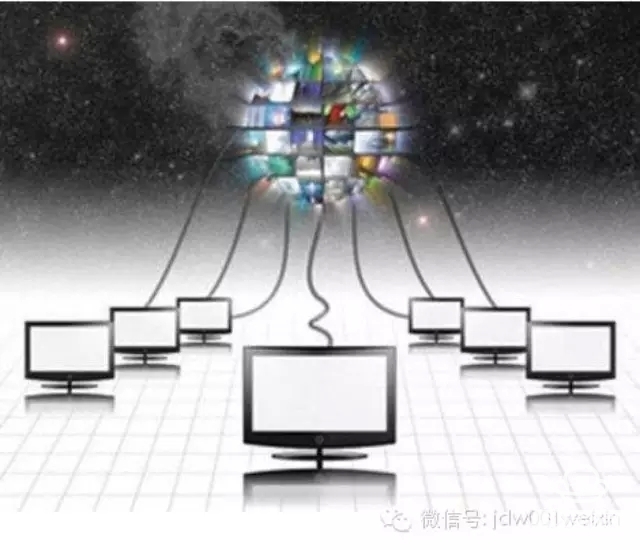In recent years, with the continuous development of the Internet, smart TV has gradually become the most popular smart device in the home appliance market. Driven by the needs of users, various television technologies have sprung up on the market, and the competition between surface televisions and ultra-thin TVs that have emerged in the past six months has even been accompanied by irrational words and deeds.

Around 2004, traditional CRT (CRT) television still dominated the mainstream market in China. Where would you like to upgrade color TV? Different companies proposed three options: LCD, plasma, and rear projection TV. Not long afterwards, the rear-projection television camp went to failure, and the plasma was left behind by the LCD.
Starting in 2009, LED (light-emitting diode) LCD TVs entered the market incubation stage and entered an explosive growth phase in 2010. In 2010, 3D (three-dimensional) TVs began to cultivate in the market and began large-scale growth in 2011; in the fall of 2012, 4K (ultra high-definition) One of the specifications, which is equivalent to 4 times the full HDTV), is finally on the market. In autumn 2013, OLED (Organic Light Emitting Diode) TVs began to appear in the Chinese market, but until recently, OLEDs on the market TVs are not only small models, but sales are not high.
As for the lighting principle, ULED (Lead LED) TV, laser TV, and Quantum TV have also appeared on the market in 2014. From a software point of view, Internet TV, smart TV, and cloud TV have been the last five or six years. TV industry hotspots.
From the perspective of hardware design, in September 2013, LG released the first curved OLED TV in Beijing. Since then, the Chinese market has started to usher in a large number of curved TVs. The ultra-thin TV was officially launched in December 2014. Sony, Skyworth, Konka and other brands have repeatedly adopted ultra-lightweight as the selling point for their new television products.
It is not difficult to see that compared with ten years ago, Chinese consumers who are concerned about color TVs now hear much more technical terms: smart, ultra-high definition, OLED, ULED, quantum dots, laser television...
The color TV technology genre presents a flourishing trend. First of all, it is beneficial to consumers because it gives consumers more choices and can meet the more diverse needs of consumers. However, this new technical term is too much, and it is likely that some consumers who originally intended to purchase color TVs in the near future will have “choice of difficulty†and have to hold money for purchase.
The reason why consumers are willing to pay for purchases may first be their uncertainty about the development trend of color TVs. With the exception of a few maverick consumers, most consumers are willing to follow the trend of technology and industry development and purchase products that meet the development trend. However, among the technological schools that flourish in the color TV industry, let alone consumers, it is difficult for industry insiders to determine which class or type of technology products will win.
Second, consumers are reluctant to buy back some "furnishing" features. For example, in 2010, the release of the 3D movie Avatar sizzled 3D TVs. In the following years, 3D functions almost became the standard for color TVs in the Chinese market. But now, the 3D boom seems to have faded away. The number of consumers who watch 3D video content on home 3D TVs is not large.
In the past six months, the newly emerged curved television and ultra-thin TV competitions have also been doped with some irrational words and deeds that expose each other. Such words and deeds are even more damaging to the industry, and they will certainly increase consumers' "selection difficulties."
In irrational competition that exposes each other, there are some specious and confusing claims that make it difficult for consumers to discern. This will cause many consumers to turn doubts on products into doubts on the industry. In order to enter the depth of wait and see. In this regard, Lu Jiebo, deputy secretary-general of the China Electronic Chamber of Commerce, also believes that color TVs should be "thin" or "curved" and should follow the consumer's choice. The technology disclosure among color TV manufacturers is not conducive to the already difficult China color TV industry. development of.
From the perspective of China's manufacturing industry as a whole, the home appliance industry is already very competitive. However, exposing short irrational competition will often induce and aggravate consumers' "selection difficulties." With the continuous development of various types of technologies, what we need more is to continuously improve and improve in a healthy competition. This is the path that the industry is really strong, and consumers can also get better products and consumer experience.
![]()

![]()

Around 2004, traditional CRT (CRT) television still dominated the mainstream market in China. Where would you like to upgrade color TV? Different companies proposed three options: LCD, plasma, and rear projection TV. Not long afterwards, the rear-projection television camp went to failure, and the plasma was left behind by the LCD.
Starting in 2009, LED (light-emitting diode) LCD TVs entered the market incubation stage and entered an explosive growth phase in 2010. In 2010, 3D (three-dimensional) TVs began to cultivate in the market and began large-scale growth in 2011; in the fall of 2012, 4K (ultra high-definition) One of the specifications, which is equivalent to 4 times the full HDTV), is finally on the market. In autumn 2013, OLED (Organic Light Emitting Diode) TVs began to appear in the Chinese market, but until recently, OLEDs on the market TVs are not only small models, but sales are not high.
As for the lighting principle, ULED (Lead LED) TV, laser TV, and Quantum TV have also appeared on the market in 2014. From a software point of view, Internet TV, smart TV, and cloud TV have been the last five or six years. TV industry hotspots.
From the perspective of hardware design, in September 2013, LG released the first curved OLED TV in Beijing. Since then, the Chinese market has started to usher in a large number of curved TVs. The ultra-thin TV was officially launched in December 2014. Sony, Skyworth, Konka and other brands have repeatedly adopted ultra-lightweight as the selling point for their new television products.
It is not difficult to see that compared with ten years ago, Chinese consumers who are concerned about color TVs now hear much more technical terms: smart, ultra-high definition, OLED, ULED, quantum dots, laser television...
The color TV technology genre presents a flourishing trend. First of all, it is beneficial to consumers because it gives consumers more choices and can meet the more diverse needs of consumers. However, this new technical term is too much, and it is likely that some consumers who originally intended to purchase color TVs in the near future will have “choice of difficulty†and have to hold money for purchase.
The reason why consumers are willing to pay for purchases may first be their uncertainty about the development trend of color TVs. With the exception of a few maverick consumers, most consumers are willing to follow the trend of technology and industry development and purchase products that meet the development trend. However, among the technological schools that flourish in the color TV industry, let alone consumers, it is difficult for industry insiders to determine which class or type of technology products will win.
Second, consumers are reluctant to buy back some "furnishing" features. For example, in 2010, the release of the 3D movie Avatar sizzled 3D TVs. In the following years, 3D functions almost became the standard for color TVs in the Chinese market. But now, the 3D boom seems to have faded away. The number of consumers who watch 3D video content on home 3D TVs is not large.
In the past six months, the newly emerged curved television and ultra-thin TV competitions have also been doped with some irrational words and deeds that expose each other. Such words and deeds are even more damaging to the industry, and they will certainly increase consumers' "selection difficulties."
In irrational competition that exposes each other, there are some specious and confusing claims that make it difficult for consumers to discern. This will cause many consumers to turn doubts on products into doubts on the industry. In order to enter the depth of wait and see. In this regard, Lu Jiebo, deputy secretary-general of the China Electronic Chamber of Commerce, also believes that color TVs should be "thin" or "curved" and should follow the consumer's choice. The technology disclosure among color TV manufacturers is not conducive to the already difficult China color TV industry. development of.
From the perspective of China's manufacturing industry as a whole, the home appliance industry is already very competitive. However, exposing short irrational competition will often induce and aggravate consumers' "selection difficulties." With the continuous development of various types of technologies, what we need more is to continuously improve and improve in a healthy competition. This is the path that the industry is really strong, and consumers can also get better products and consumer experience.
This content is copyrighted exclusively by SofaNet. Welcome manufacturers to further exchanges and cooperation with us to create more in-depth product reports.

Smart TV box recommended to install sofa butler, download address: http://app.shafa.com/
Sofa Net is an Internet technology company specializing in smart TVs and boxes. It owns popular products such as sofa butlers, sofa tables, and sofa forums. It has been committed to providing high quality application resources for smart TV and TV box users and active community exchanges. And authoritative evaluation of smart TV products.
Large Air Fryer,Dash Air Fryer,7L Air Fryer,Digital Air Fryer
Ningbo Anbo United Electric Appliance Co.,ltd , https://www.airfryerfactory.com